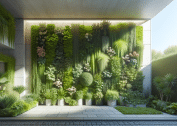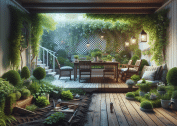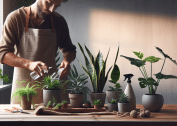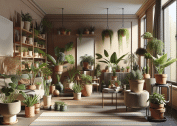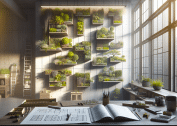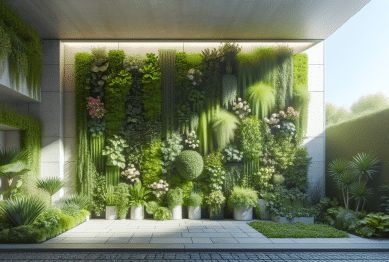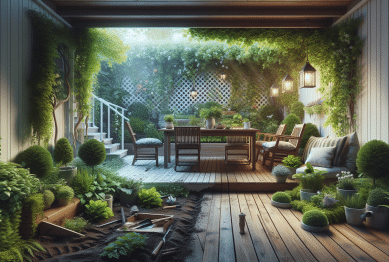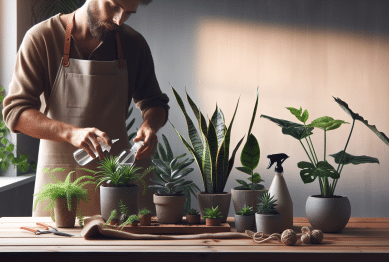Transform your living space with inspiring indoor plant ideas that bring life and fresh air into your home. This guide explores creative ways to display houseplants, improve indoor air quality, and choose greenery that suits your lifestyle and decor.
Why Indoor Plants Are More Than Just Decor
Indoor plants are not just decoration—they can actually improve overall well-being. Studies show that certain houseplants can help filter toxins from the air, offering a natural way to enhance air purification indoors. Having greenery inside creates a calming environment, which can promote relaxation and even support focus during work or study. Integrating indoor plant ideas into a home isn’t complicated, and it can be tailored to individual space and lifestyle requirements.
Many people are turning to houseplants as a flexible, budget-friendly way to update their interiors. With so many options, from dramatic fiddle leaf figs to easy-care snake plants, there is a type of houseplant suitable for every taste. Plants bring texture, color, and even fragrance into a room. They can also serve as a focal point, enhancing the overall look and feel of any indoor setting. Well-chosen indoor plant varieties can complement existing furniture and décor styles, adding depth and interest without the need for major renovation.
Research conducted by environmental scientists shows that interacting with indoor greenery can have positive mental health effects. Houseplants may help reduce feelings of stress, and some evidence links indoor gardening activities to a boost in mood and energy. Indoor plant care routines foster mindfulness and intentionality in daily life, making plant parenthood a rewarding hobby. Whether for mental wellness or air quality, the advantages of indoor plants go far beyond their visual appeal.
Choosing the Right Indoor Plants for Each Room
Not all indoor plant ideas work the same in every space. Consider light levels, temperature, and humidity when selecting plants for particular rooms. For instance, low-light spaces such as bathrooms or hallways may suit hardy species like pothos or zz plants, while bright, sunny windows are perfect for succulents and cacti. By assessing natural lighting throughout your home, you’ll quickly discover which plants thrive best in different living areas.
Kitchens benefit from compact herbs or trailing vines, offering both beauty and fresh flavors for cooking. Bedrooms can be enhanced with lavender or peace lilies, known for their calming aromas and air-purifying abilities. Living rooms often provide the largest space, so bold choices such as monstera or fiddle leaf fig trees can make striking statements near windows. Remember, groupings of plants with similar care needs create lush mini-jungles and ease the maintenance routine.
If you’re unsure where to start, many botanical gardens and horticultural extension offices offer recommendations for region-friendly, low-maintenance houseplants (Source: https://hgic.clemson.edu/factsheet/care-of-indoor-plants/). Explore plant selections that match both your space and willingness for care, making it fun to experiment with different textures, colors, and growth habits within each room of your home.
Creative Ways to Display Indoor Plants
Styling your houseplants can make a dramatic difference in how they influence a space. Hanging planters suspended from ceilings or wall hooks add dimension and save floor space—an ideal solution for smaller apartments. Floating shelves or tiered stands can showcase a collection of indoor plants at varying heights, creating a visually engaging green corner. Versatile display ideas can be adapted for modern, rustic, or eclectic home styles without heavy investment.
Repurposed containers, such as vintage teacups, mason jars, or decorative baskets, make creative planters that give houseplants a unique character. Window ledges are perfect for sun-loving succulents, while bathroom corners can accommodate humidity-loving ferns and orchids. For those with limited horizontal space, vertical wall gardens or plant ladders allow for greenery to flourish upward, making use of every available inch.
Some homeowners integrate plants directly with furniture—think side tables with built-in planters or coffee tables featuring inset terrarium displays. This merging of utility and biophilic design can add a clean, modern appeal and serve as a conversation starter for guests. By embracing diverse plant display options, it’s easy to infuse any room with personalized greenery that reflects personal style and current indoor plant trends.
Easy-Care Plant Varieties for Busy Lifestyles
If maintaining indoor plants seems daunting, there are plenty of varieties that require minimal upkeep. Snake plants, sansevieria, and pothos are famously tough, tolerating missed waterings and irregular light. ZZ plants and peace lilies are other reliable options for those seeking low-maintenance greenery. These plants efficiently clean the air and flourish even when attention is occasionally forgotten.
Aloe vera, jade plants, and spider plants are additional choices for beginners or frequent travelers. Their architectural leaves bring beauty with little fuss. Regularly dusting leaves and periodic watering are generally sufficient for these varieties. Many houseplant owners appreciate the forgiving nature of these species, which continue growing steadily through minor neglect or fluctuating indoor conditions.
Choosing the right easy-care houseplant is also about considering household needs. For example, some plants are pet-safe and suitable for homes with curious cats or dogs. Researching toxicity and care guidance, often found through university cooperative extensions (https://extension.psu.edu/common-houseplant-problems), helps ensure green additions are both beautiful and safe for everyone under the roof.
Improving Indoor Air Quality with Houseplants
Several well-studied plant species can actively filter chemicals from indoor air. NASA’s Clean Air Study highlighted how spider plants, peace lilies, and Boston ferns are effective at reducing levels of certain toxins, such as formaldehyde and benzene. Incorporating these plants into your home introduces a natural air purification system—making the environment feel fresher and healthier (Source: https://ntrs.nasa.gov/citations/19930073077).
While houseplants aren’t a complete substitute for good ventilation or air filtration devices, they do offer measurable benefits over time. Grouping several air-cleaning plants together can amplify these positive effects. Positioning them in commonly used rooms, such as bedrooms or living spaces, may create an overall sense of fresher air. For those sensitive to allergens, regular dusting and substrate changes help keep indoor gardens beneficial.
Avoid overwatering and ensure proper drainage to prevent mold, which can counteract plants’ benefits. Integrating air-cleaning greenery works best alongside other good habits, like opening windows and minimizing sources of indoor pollution. By consciously choosing air-enhancing varieties, it’s possible to design living areas that promote cleaner air as well as a thriving indoor garden.
Trendy Plant Styling Tips to Refresh Your Home
Indoor plant styling is ever-evolving, with popular trends making waves across interior design. Lush, oversized plants are increasingly paired with minimalist environments to provide contrast and a bold statement. Consider pairing sculptural plants such as monstera deliciosa or rubber tree with neutral furnishings for a striking effect. Mixing pots of different textures—terracotta, ceramic, woven—adds further depth and warmth to modern spaces.
Clusters of smaller houseplants enable you to experiment with plant groupings and arrangements. A shelf lined with trailing ivy, pothos, and delicate ferns brings organic movement and visual interest. Terra cotta and concrete planters are on trend, echoing natural materials and timeless design. Plant hangers made of macramé or jute can soften corners with touchable, bohemian appeal.
Indulge your creative side by experimenting with themed plant corners—botanical libraries, jungle-inspired nooks, or herbal kitchen gardens. Regularly rotating plant positions keeps growth even and the décor feeling up to date. Drawing inspiration from home and garden publications or online plant enthusiast groups helps keep your style current and visually engaging (Source: https://www.gardeners.com/how-to/self-watering-planters/7996.html).
References
1. Clemson Cooperative Extension. (n.d.). Care of Indoor Plants. Retrieved from https://hgic.clemson.edu/factsheet/care-of-indoor-plants/
2. NASA. (1989). Interior Landscape Plants for Indoor Air Pollution Abatement. Retrieved from https://ntrs.nasa.gov/citations/19930073077
3. University of Minnesota Extension. (n.d.). Houseplants. Retrieved from https://extension.umn.edu/houseplants
4. Penn State Extension. (n.d.). Common Houseplant Problems. Retrieved from https://extension.psu.edu/common-houseplant-problems
5. Environmental Protection Agency. (n.d.). Indoor Air Quality in Homes. Retrieved from https://www.epa.gov/indoor-air-quality-iaq/indoor-air-quality-homes
6. Gardener’s Supply Company. (n.d.). Self-Watering Planters. Retrieved from https://www.gardeners.com/how-to/self-watering-planters/7996.html


